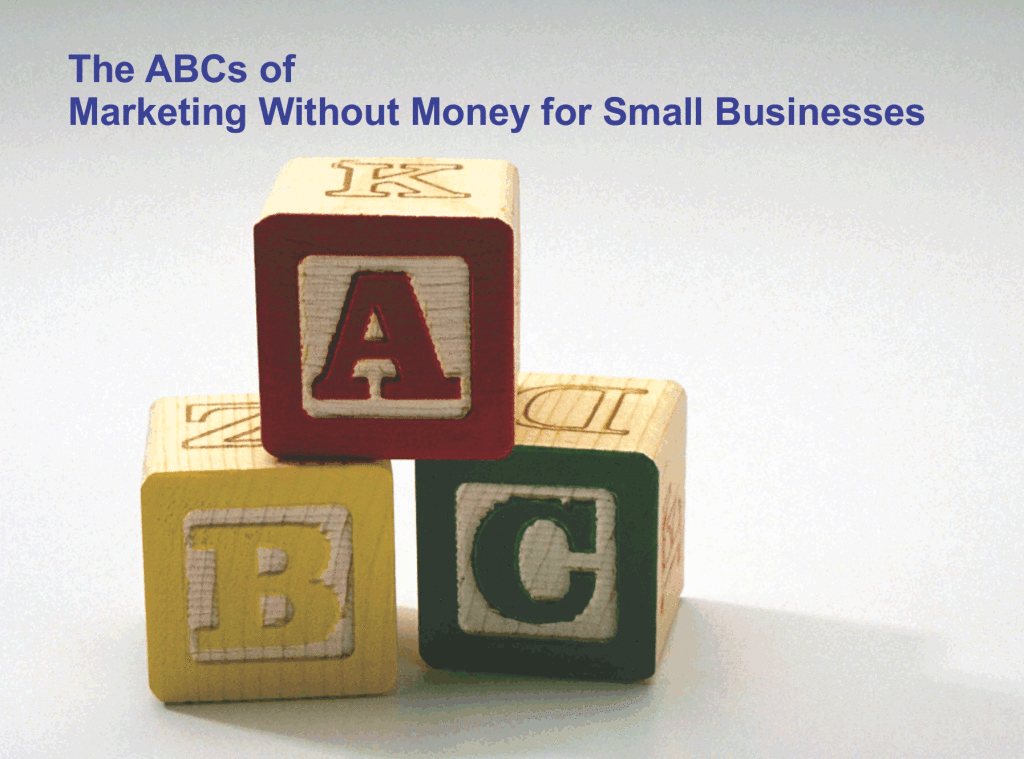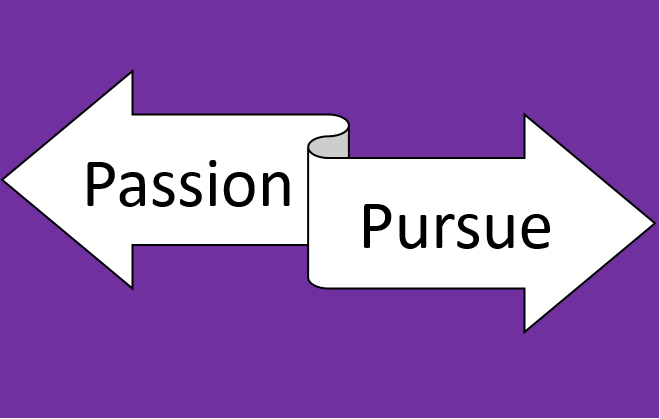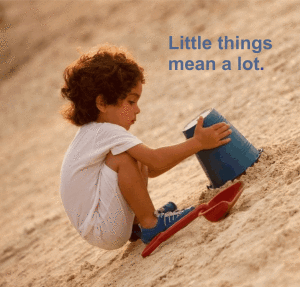“So I’m going to start the year with an offer. A freebie.” I said as the lunch bunch assembled.
“I printed out what you sent but I haven’t read it yet,” said Chris our Digital Marketing guy.
“Welcome to the club, “said Gail. “I need to have my editing pencil in hand when he gets carried away like this. His headline: The ABCs of Marketing Without Money is a okay but there’s not a clear believable benefit.”
Rick, the guy that can’t seem to retire from Direct Marketing, piped up with “He put it in the subhead: Enterprise level marketing expertly adapted for small businesses. And he carried it through in the opening copy:
Have you noticed how everything you read about marketing seems to be about companies that are vastly bigger than yours?
You know how hard it is for small companies to find resources that understand the limited funds and time you have to build your business?
Over the years we’ve learned how to find enterprise level things that work, sort out the parts that can be done with the limited time and money available to us “Little Guys” and share the secrets with you.
“Guys, I said. “I am right here.”
Bubba said, “Y’all don’t really believe we’ll let that get in the way of the grits do you? I may just be a poah boy from Georgia but I know there ain’t no marketing without some solid branding. Did he mention that?”
“He did Rob,” said Gail. “B is for
Brand. You’re going to have one whether you want to or not. Watch out for charlatans that say they can brand you with a logotype and a slogan. Yes, you need to have a mark that people can identify but your brand will be the sum total of all their interactions with you and your staff, your customers and your reputation. Do your best but don’t believe you can control it.
is what he says.”
Kate, ever the sales doyen asked, “Anything about sales in there?”
Chris said, “I’m looking under S and there is a big long section here about Social Media. But next to it under Q there’s something I’ve heard you say:
Questions are how you turn contacts into contracts. You’re in business to make a profit and to do that you have to make sales.
Getting someone to purchase, regardless of the type of business means you have to understand the problem they are trying to solve, if they have control of the checkbook and when they are ready to buy.
The better your questions and the better you listen the better you will be at closing.
“Could I get a word in edgewise here?” I asked.
“Sure,” they responded.
The Takeaway
“What I tried to do was come up with short pieces of advice that any entrepreneur or small business owner could use as a way to start thinking about marketing their business without having to spend an arm and a leg or sorely needed time to get good results.
Any one that wants the ABCs, including friends and staff, can get it free. Sign up at www.Jerryfletcher.com/profit.html It will be downloaded to you rickety tick.
This blog recaps the conversations of a group of business development professionals who meet for lunch each Friday. They discuss what’s new, what’s old, what’s good, bad and ugly but mostly what works. Jerry Fletcher is the ringleader and the one that writes up their comments.
Jerry has been researching and implementing small business marketing that builds businesses, careers and lives of joy for 20 years as President of Z-axis Marketing, Inc. Learn more at www.JerryFletcher.com
Schedule a personal appearance. Jerry speaks internationally on Networking, Marketing and Contact Relationship Magic. www.NetworkingNinja.com










